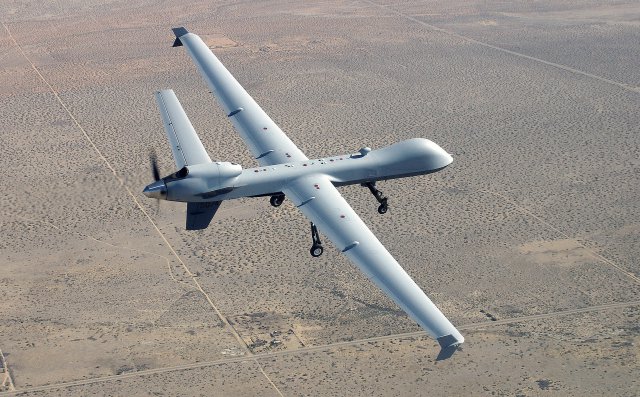Tracks Fused from Multiple Sensors Enables Self Separation and Due Regard Operations
SAN DIEGO, Dec 12, 2013
Sense and Avoid (SAA) is a major concern for the UAS industry. General Atomics Aeronautical Systems Inc. today announced the completion of the first of several planned flight tests of a Sense and Avoid (SAA) architecture and Self Separation functionality. A Government Accountability Office report earlier this year outlined the issue: "To date, no suitable technology has been deployed that would provide UAS with the capability to sense and avoid other aircraft and airborne objects and to comply completely with FAA regulatory requirements of the national airspace."
The problem is difficult, and has led the Navy to halt its parallel effort by ITT Exelis for the Northrop Grumman MQ-4C Triton UAS (formerly BAMS) although it still a program requirement.
 |
| ITT Excelis ABSAA |
Navy Halts Development of a Sense and Avoid Systems for Triton - Defense Update - Military Technology; Defense News
The US Navy has halted work on ‘Sense and Avoid’ radar for the RQ-4C Triton remotely piloted aircraft (RPA); “We have made a decision to pause of the development of that capability,” Capt Jim Hoke confirmed, Hoke is the Naval Air Systems Command program manager for the Triton. Hoke was speaking at a press conference at the AUVSI 2013 convention in Washington DC last week. “We are behind schedule (on that system)” Hoke acknowledged, “we made a decision to pause on the development of that capability for right now, it remains a requirement for the Navy, and to our program.
The GA-ASI test is a major increment in the system development and marks the first time the system has functioned as a true "system of systems" to detect every class of aircraft equipage and paves the way for a Due Regard capability and integration of UAS into the national air space (NAS). The purpose of the test was to integrate and synchronize three sensors to detect and track cooperative and non-cooperative aircraft:
- BAE Systems' AN/DPX-7 Reduced Size Transponder (RST),
- GA-ASI's air-to-air radar, called Due Regard Radar (DRR), and
- Honeywell's Traffic Alert Collision Avoidance System (TCAS) TPA-100
 |
| GA-ASI Predator B |
 |
| GA-ASI's Gray Butte Flight Operations Facility |
 |
| GA-ASI Multi-Aircraft GCS |
The TPA-100A is a new third generation processor that provides the capability to actively track aircraft out to a range of 80 to 100 nmiles and supports Mode S based ADS - B capability to extend passive tracking beyond 100 nmiles. The hardware and software design are segmented to facilitate upgrades that are planned to provide increased surveillance capabilities to achieve greater levels of situational awareness for the cockpit crew. The TPA-100A is certified to TSO C119b including software certification to DO178b. The TPA-100A is 20% lighter than conventional processors and requires about 50% of the power. Increased reliability is achieved by incorporating advanced technology to reduce parts count and by lowering internal operating temperatures.
 |
| Honeywell's Traffic Alert Collision Avoidance System (TCAS) TPA-100 |
 |
| AN/DPX-7 Reduced Size Transponder (RST) |
AN/DPX-7 reduced size transponder (RST) incorporates
all the features required for tomorrow’s global military and civil air
traffic control environments with ADS-B IN to support situational
awareness and sense-and-avoid applications. The extensive use of
programmable technology in the AN/DPX-7 ensures its versatility and
future utility through software upgrades without the risk and cost
associated with hardware modifications. The reduced size transponder has
an interchangeable platform interface module (PIM) that provides
interface flexibility.
No comments:
Post a Comment